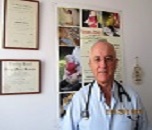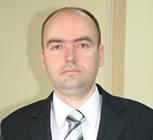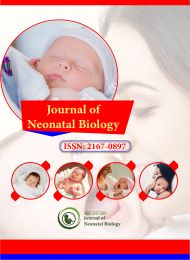Theme: Accommodate healthier world for neonates
PEDIATRICS NUTRITION 2022
- About conference
- Major sessions
- Benefits of participation
- Market analysis
- visual and video representation
On behalf of the Organizing Committee, the Conferences invite you to our annual Baby Food Summit to be held from 24-25 November 2022 in Berlin, Germany. The conference came up with the theme of providing food for newborns, children under the age of 18. The event will be accompanied by a brief description of the presentations, a discussion of the platform on important topics and information on how to provide nutrition to children. The conference session will feature interesting scientists, researchers, scholars, students. The purpose of this conference is to promote awareness and develop the concept of nutrition in infants to control mortality.
Scope and Significance of the Conference
- This tangible event will help the organization and will help people to grow their network and spread the word, this world conference will provide captions for repetitive models and future speakers around the world.
- This world conference can be one of the best opportunities to benefit a large group of people from various research institutes, universities, organizations, etc.
- The current main reviews of pediatric Benefits of participation.
- Pediatrics
- Pediatric health care
- Pediatric Nutrition
- Child Nutrition
- Pediatric Nursing
- Growth, Development, Behaviour of child:
- Pediatric Parenteral Nutrition
- Neonatal Intensive Careunit
- COVID19 and Malnutrition
- Physiology and Nutrition
- Pediatric emergency mediciens
- Pediatric Neurology
- Pediatric Urology
- Pediatric cardiology
- Clinical pediatrics
- Pediatric Gastroenterology:
- Pediatric trauma:
- Pediatric psychology
- Pediatric surgey:
- Pediatric dentistry:
- Pediatric Parenteral Nutrition:
- Clinical nutrition and malnutrition:
- Importance of nutrition education:
- Human nutrition
Track-1 Paediatrics
Pediatrics is a component of drugs that address the health and health care of children, infants, and adolescents from birth to 18 years. The term “pediatrician” means “pediatrician”; are found in two Greek words: (pais = child) and (iatros = physician or therapist). Pediatrics is an early medical specialist, developing only in the mid-19th century. Abraham Jacobi (1830–1919) is said to be the father of children's diseases. The primary goal of pediatric medicine is to reduce infant and child mortality rates, to control the spread of infectious diseases, to promote a healthier culture without long-term complications and to help alleviate the problems of children and adolescents with chronic conditions.
Pediatricians diagnose and treat a number of conditions among children including: -
Track-2: Pediatric Healthcare
In ancient times, society was generally regarded as inferior or as scientific. Experts regarded Adult medicine as harmless in the treatment of children. The children also had no rights. Fathers considered their children to be assets, so the very idea of ​​their children's lives was upheld. As a result, mothers, midwives, “intelligent women,” and general practitioners treated children on behalf of the doctors. Since mothers cannot count on professional medicine to care for their babies, they create their own styles, such as using alkaline ash to remove vernix at birth and treating toothache with opium or wine. Lack of proper child care, rights, and rules in health care to prioritize children's health led to many deaths.
In the twentieth century, medical professionals began to put more emphasis on the rights of children. Thus, children and adolescents are considered to be able to form their own health ideas when they reach the age of 13. More recently, research into children's decision-making can be conducted at the age of 12 years.Pediatric health care in advance: measure weight, height, and rotation of the head take your child's body temperature measure your baby's breathing and heart rate check the baby's skin colour and exertion give eye drops or ointment to prevent eye infections give vitamin K to treat the chances of bleeding
Track-3: Pediatric Nutrition
Infant nutrition takes into account the healthy needs of children to support growth and development, which includes changes in organ function and body composition.
Newborn babies eat small meals at a time, but they should not be fed directly into the jar because germs are introduced into the pot from the baby's mouth. However germs will grow and can lead to diarrhoea, vomiting, or other symptoms of foodborne illness. To prevent food allergies, other foods such as wheat, eggs, and chocolates should be avoided until the child is one year old. To ensure adequate water supply, which can only be obtained with milk, it is important to maintain the electrolyte balance.Description of pediatric Nutrition: Breastfeeding for optimum health"Exclusive breastfeeding is ideal nutrition and sufficient to support optimal growth and development for rougly the first six months after birth It is recommended that breastfeeding continue for at least 12 months,later for as long as mutually asked.
Track-4: Child Nutrition
Traditional home-cooked meals usually include whole grains, roots, and fruits, which provide energy with very little protein. Only vegetarian or plant-based foods that are basic may not adequately fill the child nutrition gap. Therefore, it is important that you introduce a healthy diet at this stage to ensure that your child receives all the macro and micronutrients that will help close the nutrient gap.
List of baby nutrition and tips to help increase nutrition
Store plenty of fresh fruit and vegetarian snacks in hand. Make sure they are pre-washed, cut, and ready to go. Add yoghurt, peanut butter, or hummus to get more protein. Let your children choose vegetables and fruits they like. It helps to instill a healthy eating habit. Use nutritious fats, ie healthy fats such as - olive oil, avocados, nuts (such as almonds, hazelnuts, and pecans), and seeds (such as pumpkin, sesame) Remove eggs early in the week and add to your children's breakfast with a small amount of sugar, high-protein cereals, and apples.
Track-5: Pediatric Nursing
Pediatric nursing is a specialized nursing profession that focuses on pediatric medicine and pediatric health care, from childhood to adolescence. This is an important field because the health of children is different from that of adults due to the growth and development that occur during infertility.
They may provide non-vaccination or immunizations and ensure that children adhere to their immunization schedule. Also, the pediatric nurse communicates with the children and their families to explain their health and stages of treatment.The pediatric nurse may be involved in training and managing children's health, in the community or in other camp specialists. They can also help to create clinical instability about the most common health conditions affecting children and the effective treatment style.
Track-6: Growth,Development,Behaviour of child
The growth of a child involves four key factors. These are physical, intellectual, emotional, and social.
Physical: Babies are born with a sense of humour that helps them to participate in the survival of the fittest (such as breastfeeding, and responding to unexpected noises). As the baby grows with proper care, its muscles grow to learn its movements. This goes hand in hand with gross motor skills and includes actions such as sitting, moving arms and legs, and taking steps.
Intelligence: Mental development is a child's ability to think and reason. Children are keenly interested in learning, which puts parents in a better position to mold and teach their children how to read and develop. The child’s brain does its best in its development at an early age, so complete stimulation from adolescence supports good brain development and curiosity.
Emotional: The child's attachment to his parent is the basis on which the child develops his self-esteem. Safe adherence will lead to better emotional, psychological and social issues as the child will gain more confidence in him or her to explore new outcomes and communication. It also reduces the child's risk of developing an unhealthy lifestyle.
Public: Business development businesses how a child interacts with other people and outcomes. Babies need social interactions from birth as it helps to regenerate them and teaches them to respond. Children use sounds to communicate naturally, until they have learned to speak and understand what is being said to them. This type of social development is almost synonymous with intellectual development.
Track-7:Pediatric Parenteral Nutrition
The remedies for PN in infants and toddlers are to maintain a healthy diet and to achieve a balanced physical growth; in irrational infants, the object mimics intrauterine growth. Peripheral PN is shown only in addition to a fraction of the body nutrients or as a low-dose remedy in cases waiting for venous central access.
conditions that can absorb nutrients through the gastrointestinal tract, which may include the following: severe diarrhea, short bowel disease, GI tract diagnostic problems, inflammatory bowel complaints, cystic fibrosis, or loss of anatomic or functional GI integrity,Severe malnutrition,Strong catabolic states, such as fever, inflammation, or sepsis,cases prove superior treatment with chemicals, radiation, and bone marrow transplants,Patients whose clinical condition may have complete intestinal relaxation (e.g., necrotizing enterocolitis, pancreatitis, GI fistulas, or recent GI surgery),cruel care of low birth weight babies,Neonatal asphyxia,Meconium ileus,Respiratory Distress Syndrome (RDS)
Track-8: Neonatal Intensive Care unit
Newborn babies who need intensive medical care are often placed in a special hospital setting called a neonatal intensive care unit (NICU). NICU has state-of-the-art technology and trained healthcare professionals to provide specialized care to very young patients. NICUs may provide care for children who are not ill but in need of special nursing care. Most babies admitted to NICU are premature (born before 37 weeks of gestation), have a low birth weight (less than 5.5 pounds), or have a medical condition that requires special care. Many of these babies have a low birth weight. Twins, triplets, and other repetitions are often imported into the NICU. This is because they are often born prematurely and are smaller than babies born alone. Children with health conditions such as respiratory problems, heart problems, illnesses, or birth defects are also cared for at NICU. Below are some factors that can place a baby at high risk and increase the chances of being admitted to the NICU. Maternal factors include:Multiple pregnancy (twins, triplets, or more)Sexually transmitted diseasesBeing younger than age 16 or older than age 40High blood pressure (hypertension)Diabetes.Baby factors include: Baby born at gestational age of less than 37 weeks or more than 42 weeks. Birth weight less than 5 pounds, 8 ounces (2,500 grams) or over 8 pounds, 13 ounces (4,000 grams).Small for gestational age.Medicine or resuscitation in the delivery room.Birth defects.
Track-9:COVID19 and Malnutrition
The COVID-19 epidemic is undermining global nutrition, especially in low- and middle-income countries (LMICs). Serious side effects are experienced by young children. Malnutrition can make the effects of COVID-19 severe on mothers and children. At the same time, many children are malnourished due to poor nutrition, disruption of nutrition and other vital resources, and the social and economic shock caused by the epidemic at LMICs. The COVID-19 epidemic is expected to exacerbate other types of childhood malnutrition, including disability, micronutrient deficiency, and obesity. The failure of the global community to act now will have devastating long-term consequences for children, mortals and the world economy.
Malnutrition means a deficiency, accumulation, or imbalance of one's energy and / or nutrients. The term malnutrition refers to 3 broad categories of conditions: malnutrition, which includes wasting (low-for-age weight), stress (low-for-age) and light (low-for-age weight);micronutrient-related malnutrition, including micronutrient deficiency (deficiency of essential vitamins and minerals) or excessive micronutrient; and Fat, rotundity and eating disorders (such as heartburn, stroke, diabetes and other cancers).
Track-10: Physiology and Nutrition
Nutrition physiology focuses on how the body releases nutrients from food, how we get the energy we need, how we use nutrients and how all of these are linked to health and fitness. The 3 most important benefits of prenatal nutrition are; helps to increase immunity to various infectious diseases, ensures proper growth of the brain and other vital organs and improves the child's activity levels and mental functioning. Nutritional nutrition in childhood not only keeps the growth and development of the child's full potential, it can also initiate and maintain healthy eating habits that provide health and well-being, and that can extend beyond childhood later and beyond.
Types of Food: Nutrients can be divided into two categories: macronutrients, and micronutrients. Macronutrients are those nutrients that the body needs in large quantities. This gives the body energy (calories). Micronutrients are those nutrients that the body needs in small amounts. Macronutrients: Carbohydrates, fat and protein are called macronutrients. They are the nutrients you use in the high amounts. “Macronutrients are the nutritive ingredient of food that the body wants for energy and to keep up the body's shape Micronutrients: Micronutrients are one of the main groups of nutrients your body needs. They include vitamins and minerals. Vitamins are required for energy manufacture, immune function, blood clotting and other functions. Meanwhile, minerals play an major role in growth, bone health, fluid balance and several other processes
Track-11: Pediatric emergency medicines
Children’s emergency can occur with a variety of factors. The most common are serious medical problems, such as chronic fever, shortness of breath, serious illness, fainting, dehydration, and allergies.
Types of emergencies: The most common emergencies found in the pediatric office are respiratory depression, dehydration, anaphylaxis, epilepsy and trauma. Numeracy for children is sometimes difficult as the signs and symptoms may be minute and may not be clearly expressed.Causes of emergency:Children get unwell, are exposed to environmental dangers (like drowning or poisons), or may have incurable conditions that put them at higher risk of any of these problems.Common medical emergency:Bleeding. Cuts and wounds cause bleeding, but severe wounds can also cause haemorrhaging that you can't see. Breathing difficulties. Someone collapses. Fit and/or epileptic seizure. Severe pain. Heart attack. A stroke.
Commonly Prescribed Pediatric Medications:Amoxicillin. Amoxicillin is at the top of the list of most commonly prescribed pediatric medications. ...
- Amoxicillin/Clavulanic Acid. ...
- Albuterol. ...
- Cephalexin. ...
- Azithromycin. ...
- Fluticasone. ...
- Ibuprofen. ...
- Cefdinir.
Amoxicillin is a penicillin antibiotic. It is used to treat bacterial infections, such as respiratory infections (including pneumonia) and dental ulcers. It can be used in combination with other antibiotics and medicines for stomach ulcers.
Track-12: Pediatric Neurology
Pediatric neurologists diagnose and treat children with conditions and conditions that affect the nervous system. They also experience cases of head injuries, fainting, or muscle weakness. The most common neurological exigency: New convulsions are the most common neurologic conclusions of children presenting to ER [1, 2]. Varying vibrations or gestures arising from abnormal electrical activity in the brain
Reasons to See a Pediatric Neurologist A headache, normal, or persistent, Wrong balance, Unexpected loss of information, Loss of memory,Pain,Lack of hearing, sensitivity, or itching, Moving problems,Shivering,Detention test,Travel problems,Unintentional pull or unity,Fainting,Problems with the joint or other vehicle function.If your child is diagnosed with a neurological disorder, he or she will probably need to see a pediatric neurologist for treatment or monitoring. Electroencephalogram (EEG). MRI. Electro diagnostic testing. Positron emission tomography (PET) scan. Arteriogram (also called angiogram). Analysis of cerebral spinal fluid (also called spinal tap or lumbar puncture). Possibility Muscle weakness. Slight or partial loss of consciousness.Fainting.Hard reading and writing. Poor mental skills. Unexplained pain.L Decreased consciousness.
Track-13: Pediatric Urology
Pediatric urology is a subspecialty of drugs for the treatment of diseases of the children's genitourinary systems. Pediatricians provide care for both boys and girls from birth to old age. The most common problems are those involving urinary tract infections, genital warts, and testicles.Common urology problems:Urologic disorders or conditions include urinary tract infections, systemic reminders, bladder control problems, and prostate problems, among others. Some urologic conditions are short-lived, while others are prolonged.
.A urologist may treat bladder problems, urinary tract infections (UTIs), bladder and kidney cancer, kidney failure, and kidney stones. Men may notice: Erectile Dysfunction (ED) Enlargement of the prostate gland. Urodynamic is a set of tests that measure the function of the lower urinary tract. The purpose of the test is to reproduce your child's voiding patters to diagnose any underlying problem. Neurourology, which focuses on urinary problems due to conditions of the nervous system. pediatric urology, focusing on urinary problems in children. urologic oncology, focusing on urinary tract cancer, including bladder, kidneys, prostate, and testicles.Urologists treat conditions of the urinary tract, including the urethra, bladder and kidneys. However, urologists only treat certain kidney conditions. They can operate, remove cancer cells, and remove kidney stones.
Track-14: Pediatric Cardiology
Pediatric cardiologists diagnose, treat, and manage children's heart problems, including"Natural heart complaint", such as heart defects in the heart chambers, stopcock problems, and abnormal blood vessels Arrhythmias, or abnormal heart movements caused by the electrical system that controls the heartbeat
Some pediatric cardiologists also treat "high pulmonary hypertension" (high blood pressure in the lungs), but in some regions of the world, pulmonary hypertension is treated by pediatric pulmonologists (order specialists).Some pediatric cardiologists may treat “systemic hypertension” (hypertension), but in some regions of the world, systemic hypertension is treated by pediatricians (kidney specialists).It usually takes 10-13 years to become a cardiologist. They specialise in treating diseases like congenital heart defects, heart failure, coronary artery diseases and valvular heart diseases. while a general cardiologist may be involved in long-term patient care they do not performe procedure on sugries s. You might be recommended an interventional cardiologist in case of non-surgical procedures like placing coronary stents or endoscopy which is actually a catheter intervention and not a surgery
Track-15: Pediatric Gastroenterology
Digestive, liver, and nutritional problems in children are very different from those seen in adults. Technical training and knowledge in pediatric gastroenterology is essential. Pediatricians gastroenterologists treat children from an early age during adolescence. They choose to make child care the core of their medical practice, which provides specially expanded information to care for children, infants, and adolescents.Pediatric gastroenterologists usually offer the following treatments: Bleeding in the intestinal tract, Lactose dogmatism, Anorexia nervosa or intolerance ,Severe or complex complaints of gastroesophageal infarction (influx or GERD) ,intestinal complaints of rebellion, Pattern of short intestines ,Liver complaint ,Severe or general abdominal pain ,Vomiting ,common constipation ,common or severe diarrhoea ,Pancreatic dysfunction (including cystic fibrosis) and pancreatitis Malnutrition problems (including malnutrition, poor growth, and circulation), Feeding diseases
Pediatric gastroenterologists are specially trained to perform individual tests of the child's digestive system. Special tools, such as endoscopes, are used to examine the inside of the digestive tract or to obtain towel samples (necropsies). Endoscopic procedures performed by pediatric gastroenterologists include esophagogastroduodenoscopy and colonoscopy. Pediatric gastroenterologists also treat bleeding, swallowing problems, or other intestinal problems. They have a lot of moxie in managing nutritional problems in children, including the placement and function of feeding and intravenous tubes as well as diagnosing and treating children, infants, and adolescents with liver complaints.
Track-16: Pediatric trauma
Child abuse traumatic brain injury or head injury at birth, immaturity, or absence. In general, the types of injuries during immaturity and absence include the following. This is known as the primary injury because it is the first trauma to the head or brain: Crown, Brain Injury, Headache, Intracerebral haemorrhage, intracranial hematoma, verbose axonal injury, Conflict
Treatment: In Columbia, our surgeons use a back surgery and a treatment for individual trauma in children, giving them a form that can be styled. The course of treatment depends largely on the severity of the injury and may include: Relax, Ice, Topical antibiotic ointment and strong girth, Stitches, Hospitalization for observation.Diagnosis of pediatric trauma starts with a physical examination, during which the physician acquires a complete medical history of the child and asks the child and parent how the injury passed.Also, a neurological examination is performed to identify any difference in brain function and internal status. This test consists of assessing hail, motor function, swallowing, eye movements, sense of smell, sensation, balance, and collaboration.A child’s internal status is assessed according to the Pediatric Glasgow coma scale, a 15-item scoring system, and the score is used to determine whether head trauma was mild, moderate, or severe. The lower the score, the more severe the injury.
Track-17: Pediatric Psychology
Pediatric psychology is a multi-faceted component of both the scientific and clinical trials that attempt to address the brain components of illness, injury, and the creation of health practices in children, adolescents, and families in the pediatric health setting. Brain problems addressed in the test framework emphasize strong communication between children, their families, and the health care system as a whole.
Common areas of learning include psychological development, environmental factors that contribute to the development of complaint, the issue of children with medical conditions, treating related behavioural and emotional aspects of illness and injury, and promoting appropriate health practices, disability testing, training psychologists and other health professionals in child psychology, and advocacy. Community policy that improves the health of children.
Types of child psychology:The child psychology field offers multiple career paths and specializations, including in general psychology, academy psychology, neuropsychology, forensic psychology, and clinical psychology.Skills need for psychology:A child psychologist must be complete at addressing numerous issues, including abuse, trauma, cerebral diseases, learning disabilities, special requirement’s and bullying.
- Enthusiasm. ...
- Responsibility. ...
- Specialized Knowledge. ...
- Communication.
Track-18: Pediatric Surgey
Pediatric surgery is a special surgery that includes surgery for newborns, infants, toddlers, teens, and adolescents. General surgery: Examples of the most common types of minor surgery may include, but are not limited to, the following: The placement of storage tubes, Hernia Repair, Repair of fractures, Sores on the skin.
7 of the most dangerous surgery: Craniotomy. A craniotomy involves the removal of cranium by minimal pressure to reduce brain pressure. A thoracic aorta augmentation form. Oesophagectomy. Spinal surgery for osteomyelitis. Bladder cystectomy. Abdominal bypass. Separation of conjoined twins.Common pediatric conditions that may bear pediatric surgery includenatural deformation: lymphangioma, split lip and palate, esophageal atresia and tracheoesophageal fistula, hypertrophic pyloric stenosis, intestinal atresia, necrotizing enterocolitis, meconium entrapment, Hirschsprung's complaint, imperforate anus, undescended testes, intestinal malrotation
- abdominal wall blights omphalocele, gastroschisis, hernias
- chest wall scar pectus excavatum
- nonage excrescences like neuroblastoma, Wilms' excrescences, rhabdomyosarcoma, ATRT, liver excrescences, teratomas, kidney tumors:
- Separation of conjoined halves
Track-19:Pediatric dentistry
Pediatric dentists have been dedicated to the oral health of children from infancy to adolescence. They have experience and qualifications to look after baby teeth, epoxies, and mouths in all stages of chronic infertility. Babies begin to receive baby teeth during the first 6 months of life. By the time they are 6 or 7 years old, they are starting to lose their first teeth, eventually being replaced with second, never decayed teeth.
Without proper dental care, children face potential oral decay and complaints that can detect the persistence of pain and complications. Infant tooth decay — a contagious complaint — is 5 times more common in children than asthma and 7 times more common in hay fever. About 1 in 5 children (20%) over the age of 5 to 11 has at least one decayed tooth.
Treatment done by pediatric dentist:Pediatric dentists give comprehensive oral health care that includes the following
- Child oral health examination, which include threat assessment for caries in mother and child
- Preventative dental care including cleaning and fluoride treatments, as well as nutrition and diet recommendations
- Habit comforting (for illustration, pacifier use, and thumb stinking)
- Early assessment and treatment for uncurling teeth and correcting an indecorous bite (orthodontics)
- Repair of tooth depressions or blight
- Diagnosis of oral conditions associated with conditions similar as diabetes​, natural heart disfigurement, asthma, hay fever, and attention deficiency/ hyperactivity disorder (ADHD​)
- operation of gum diseases and conditions including ulcers, short frenulae, mucoceles, and pediatric periodontal complaints
- Care for dental injuries (for illustration, fractured, displaced or knocked-o
Track-20: Human Nutrition
Human nutrition is the study of how the food we eat affects our growth and development, the threat of complaint, and physical activity. Nutrition contributes to the health of individuals and communities. Human nutrition is the process by which food items are converted into body tissues and provide the full range of body and internal structure that make up human life.
Types of human diets: Carbohydrate. Carbohydrates are also known as carbohydrates or saccharides, Protein. They are a group of molecules that make up amino acids, Fat. Fats are essential for supporting cell growth and forcing energy into the body, Water, Minerals, Threads, and Vitamins.People with healthy eating patterns live longer and are at lower risk for serious health problems such as heart disease, type 2 diabetes, and obesity. For people with chronic diseases, healthy eating can help manage these conditions and prevent complications.Good nutrition can helpReduce the risk of some diseases, including heart disease, diabetes, stroke, some cancers, and osteoporosis. Reduce high blood pressur . Lower high cholesterol. Improve your well-being. Improve your ability to fight off illness. Improve your ability to recover from illness or injury.
Track-21: Clinical nutrition and malnutrition
Malnutrition is often referred to as malnutrition and applies to obese and overweight people.
Purpose of clinical nutrition: The objectives of Clinical Nutrition Services are to: provide nutrition testing, interventions, and case studies with residents. Insert nutritional requirements for conditions and citizens met with updates and snacks provided. Provide evidence-based nutrition supplement.FIVE SIGN SIGNS THAT YOUR CHILD IS CONFUSED: Weight Loss, Slight Weight Loss, or Lightness. Children gain weight at different rates. Not very tall or high. Eating Less Normal. Malnutrition Due to Stomach Problems. Lower Active or Low Sports.
Significance of child nutrition:Optimal nutrition in early nonage not only.supports growth and development to the child's full eventuality, it can also initiate and support healthy eating habits that contribute to overall health and well-being, and that may extend into subsequently nonage and beyond.Good nutrition can help to Reduce the threat of some condition, including heart complaint, diabetes, stroke, some cancers, and osteoporosis. Reduce high blood pressure. Lower high cholesterol. Ameliorate your well-being. Ameliorate your capability to fight off illness. Ameliorate your capability to recover from illness or injury.
Advantages of Participating at our conference
- The advantage the Speaker & Abstract pages created in Google on your profile under your name would get worldwide visibility
- Our robust online publicity attracts 30000+ users and 50000+ views to our Library of Abstracts which brings worldwide exposure to the researchers and speakers participate in our conferences
- Meet and exchange ideas with hundreds of like-minded professionals who are leaders in Hematology.
- All the conference participants will have a different excuse to participate at one-to-one meeting with eminent Speakers and renowned keynote speakers.
- A unique opportunity to listen what the worldwide researchers are talking about at our Keynote sessions by world’s most eminent researchers in the field of Hematology.
- Hematology Congress intensive conference schedule, you will access strategic gift planning knowledge and expertise that’s worth its weight golf form an impressive array of recognized professionals.
- Top Industries Representation of Industrial Leaders, where you get a great opportunity to meet and discuss with the Industrial Leaders in person
- Exposure to Symposia’s, Workshops on carrier development and Preconference workshops in all major countries
- Nominations for Best Poster Award
- Outstanding Young Researcher Award
- Group Registration benefits
Benefits of Participation- Speaker
- Worldwide acknowledgment of Researcher’s profile
- Obtain professional development credits
- Explore the best in Cutting edge Research
- Make Lasting connections at Networking and Social Events
- An opportunity to give One page advertisement in abstract book and flyers distribution which eventually gets 1 Million views and add great value to your research profile
- Learn beyond your field of interest, a change to know more about the new topics and research apart from your core subject from Hematology.
- We provide unique convergence of Networking, Learning and Fun into a single package
Benefits of Participation- Delegate
- Professional Development –Uplift the knowledge and skills
- Conference attendance inspires, rejuvenates, and energizes delegates
- Your participation at our conference will be helpful for a new approach and ideology that can be utilized for the extending the outcome of companies or industries.
- Opportunities to meet through online webinar for Hematology Congress researchers and experts of same field and share new ideas
Benefit of Participation- Sponsor
- Exposure to the international atmosphere will increase the odds of getting new business
- Opportunity to showcase the new technology, new products of your company, or the service your industry to a broad international participants.
- World’s No. 1 platform to show case Hematology products.
- Increase business by lead generation through our conference participants.
- Build a successful business takes a lot of time, effort and drive, so it’s always good to have a network of colleagues and associates to draw energy from people who share a similar drive and objective.
- Hematology conferences create opportunities for greater focus and reflection that could help you take your business to the next level.
- Benchmarking key strategies for business and moving it forward
- Get answers to your business questions and challenges from credible individuals at our conference
- Real Benefits in New business-Many Organizations make deals and sign contracts at our Hematology Congress.
- Promotional logo of your organization at our conference banner, website and other proceedings, branding and marketing material
Benefit of Association for Collaborators
- No one in the world have this huge visitors towards Hematology, this is the best platform to showcase the society
- Create long-lasting relationships with the peers
- Promotional content and Logo of your Association at our conference banner, website and other proceedings, branding and marketing material will increase your subscribers/Members number by 40%.
- Our event visibility to your Organization page can give a great impact for your association in the Global Market forum.
- Your representatives can network with key conference delegates to update their knowledge and understanding of your organization and services.
- Details will be incorporated with Hematology promotional materials like flyers, brochure, pamphlets, program which will be distributed to Hospitals, Universities, Society and Researchers
Without proper dental care, children face potential oral decay and complaints that can detect the persistence of pain and complications. Infant tooth decay — a contagious complaint — is 5 times more common in children than asthma and 7 times more common in hay fever. About 1 in 5 children (20%) over the age of 5 to 11 has at least one decayed tooth.
Separates and analyzes segments about type, region, and usage. The report presents a comprehensive overview of the global Baby Food market including market share, price, income, growth rate, production by type, and consumption. In-depth data on segments of the global market will help monitor future profitability and make significant growth choices. The researchers of this report provide a detailed examination of historical records, current statistics, and future forecasts for the period 2021 to 2027.
The report provides an overview of the competitive nature of the global Baby Food market and includes a detailed description of the performance of some of the world's key players finishing the market. The main competitors in the market are studied by market value, market status, and market revenue are also stated in the market report.
A professionally produced video will keep your audience more focused and engaged with the overall content; it will tell your story and will provoke emotional responses. Video presentation perfectly aligns with your goals as a presenter: you want an engaged audience to think about and act on the information you’re conveying.
It’s easy to improve the audience experience through video, which utilizes sight and sound to reel the audience in. A short video will give them better ideas of your vision or approach, and more efficiently, everyone benefits. You will communicate more with less.
Virtual/Video presentations are increasing interest in providing learners with actual presentations and video is demonstrated to be an expanding channel for presentation.
Video presentation is currently used by our 2000+ speakers (having VISA issues, schedule conflicts etc…) across the globe.
Video Presentation Opportunity: Unavailability to travel due to various issues such as time constraint and visa to enter the country. Video Presentation is one best option to put across your research at a global platform. Having video played at the conference proceedings, would surely serve the purpose of online visibility for your research.
Benefits of opting Video Presentation:
- Speaker video presentation will be officially recognized
- One of the scientific committee will represent the presentation on behalf of speaker
- Session Chair suggestions and comments will be communicated after the conference
- Publication of Abstract in the Souvenir and International Journal with unique DOI
- Certification by the International Organizing Committee (IOCM)
- Conference Souvenir (Hardcopy) delivery to presenter address
Details for Video Presenter:
- Record your presentation video and send us through www.wetransfer.com
- Duration of the video: 30- 40 minutes
- Registration Fee: $249
Abstract submission along with biography to respective conference Program Manager or submission through direct online website. Upon submitting the abstract, you would receive an acknowledgment of acceptance from the respective Program Manager within 24 hours.
Simply Record your Presentation through Camera/ Phone with high clarity and send the same to conference Program Manager which will be presented at the conference venue on Speaker name and will also be available in website along with other presentations for the conference.
Well there are many advantages! It was fun, interesting and kept the audience engaged. Of course they had a budget and invested money into their presentation. They will come back and said it was well worth the investment in the end and they use it for many other uses.
In this regards, we take the immense pleasure to invite you all to be the speaker under Video Presentation category at “World congress on pediatric nutrition” during November 24-25, 2022 in berlin, germany. Certification would be received by video presenters along with external scientific association with decision makers and leaders around the globe.
Join Speakers Video Presentation Club @ pediatric nutrition 2022 Congress at berlin, germeny
Conference Highlights
- Pediatrics
- Pediatric health care
- Pediatric Nutrition
- Child Nutrition
- Pediatric Nursing
- Growth, Development, Behaviour of child:
- Pediatric Parenteral Nutrition
- Neonatal Intensive Careunit
- COVID19 and Malnutrition
- Physiology and Nutrition
- Pediatric emergency mediciens
- Pediatric Neurology
- Pediatric Urology
- Pediatric Cardiology
- Pediatric Gastroenterology
- Pediatric Trauma
- Pediatric Psychology
- Pediatric Surgey
- Pediatric Dentistry
- Human Nutrition
- Child Nutrition and Malnutrition
To share your views and research, please click here to register for the Conference.
To Collaborate Scientific Professionals around the World
| Conference Date | November 24-25, 2022 | ||
| Sponsors & Exhibitors |
|
||
| Speaker Opportunity Closed | |||
| Poster Opportunity Closed | Click Here to View | ||
Useful Links
Special Issues
All accepted abstracts will be published in respective Our International Journals.
Abstracts will be provided with Digital Object Identifier by





























